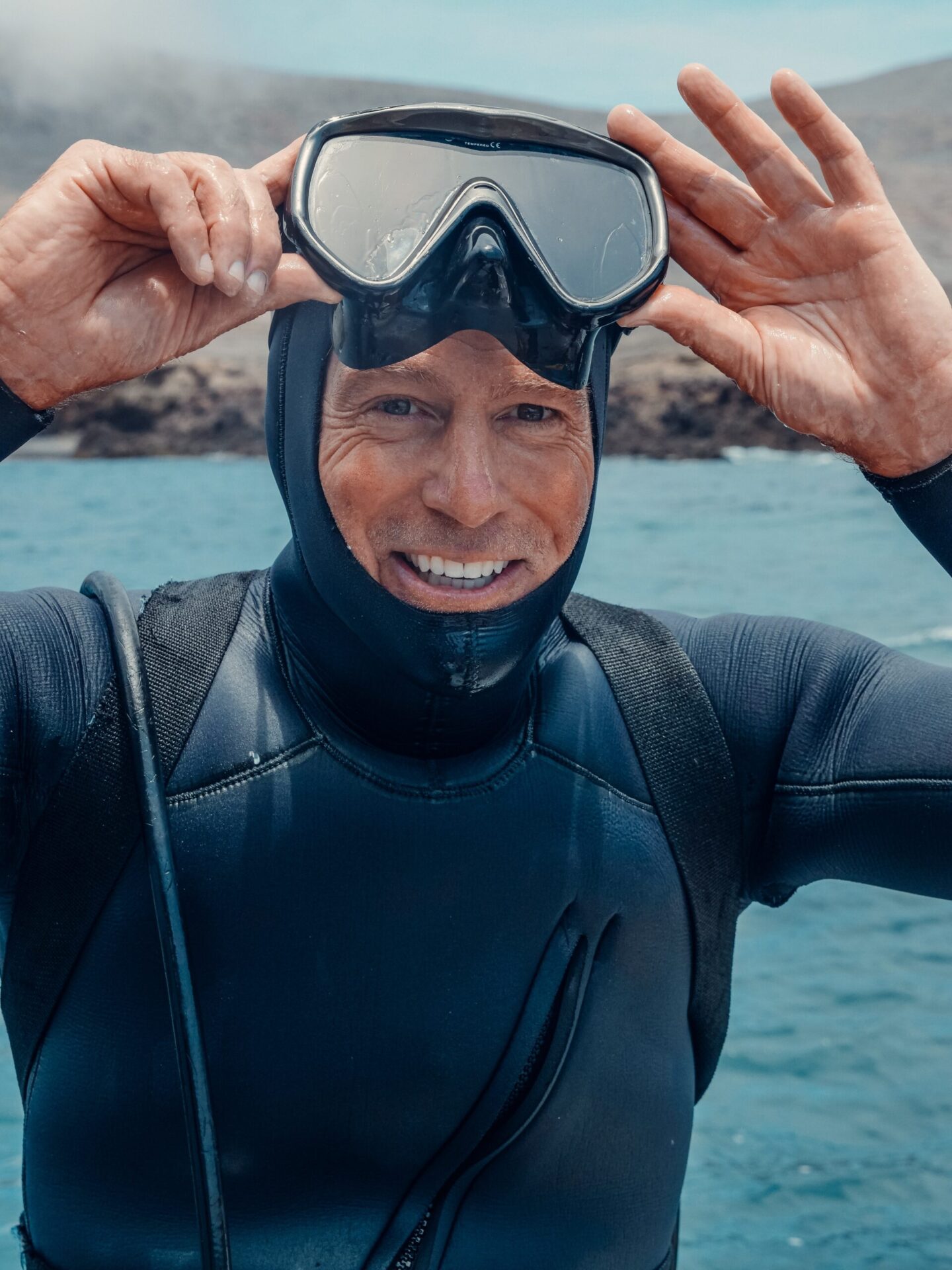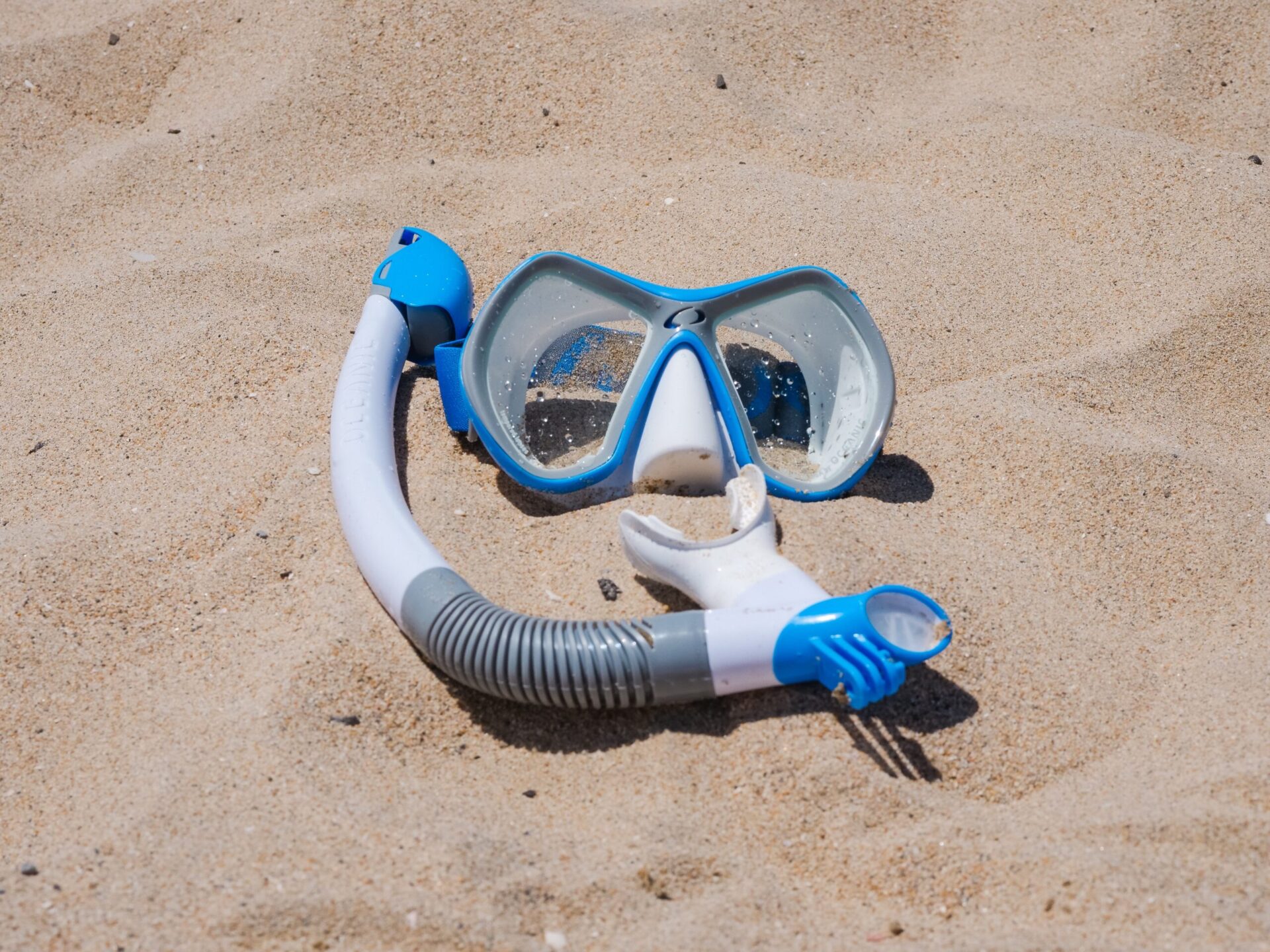The right mask can make all the difference in your diving experience. Maybe you have snorkeled on vacation and are thinking about giving scuba a try. You love your snorkeling mask – can you use it for scuba diving? Maybe you have a few snorkeling masks laying around, and think you can use them. Let’s explore the similarities and differences between scuba and snorkeling masks and why you probably don’t want to use that snorkeling mask for scuba diving.
What is the difference between a scuba mask and a snorkeling mask?
Key differences between scuba diving masks and snorkeling masks are mostly related to the material differences, quality and testing standards and as a result price. Snorkeling masks are primarily designed to provide a wide field of view from the surface and support some diving to depths of usually less than 20 feet. Let’s discuss each of these items in more detail:
Material differences
Since scuba masks are designed to support pressures associated with descending deep underwater the types of materials used in their construction are different than those of a snorkeling mask. That’s not to say you cannot have a great quality snorkel mask that will last forever – it just won’t be safe to scuba dive with. Most scuba masks use tempered glass for the viewing pane. Tempered glass for scuba masks is designed to withstand high pressures as well as if issues occur handle them as safely as possible. Some snorkeling masks may have their lense constructed of acrylic which is very clear but does not have the same ability to withstand pressures. Other material differences have to do with the mask skit which in scuba masks is usually constructed of high-quality silicone which will not dry out and will remain durable. Where in some snorkeling masks the quality of the silicone may be lower or substituted with rubber which tends to dry out and crack over time.
Buoyancy
Snorkel masks tend to have a slightly higher volume which allows for a nice wide field of view but results in more air being trapped within the mask. In the case of snorkeling, this is beneficial because usually, the goal is to stay on the surface of the water taking in all the underwater life and sights. In the case of scuba masks, the tendency is to have slightly less volume and as a result trap less air. Additionally, the materials selected for scuba masks tend toward less buoyant materials. Since the goal is to descend deeper this reduced buoyancy is an advantage to scuba divers.
Price differential
Finally, due to the difference in the quality of the materials as well as the additional testing and design requirements scuba masks will be more expensive than their snorkeling counterparts.
Let’s explore more about finding the right mask for your scuba or snorkeling adventure.
Selecting a Mask
Since the mask you select is your window to the underwater world, it is important to find one that fits well. It is important to note that the type of mask you select will alter your view. Selecting a mask that fits your face well is suer important because a poorly fitting mask will be uncomfortable and will likely leak water. Note – in this guide we will not discuss full-face masks as there are additional items that need to be considered when using that type of mask. Details on a full face mask are covered in this. Key items to look out for when selecting a mask are:
Fit
 The most crucial feature of any scuba diving or snorkeling mask is the fit, and don’t just choose a mask because it looks nice – your mask must properly fit to keep water out. Follow these quick steps to test fit a mask and ensure it won’t leak:
The most crucial feature of any scuba diving or snorkeling mask is the fit, and don’t just choose a mask because it looks nice – your mask must properly fit to keep water out. Follow these quick steps to test fit a mask and ensure it won’t leak:
- Hold the mask gently against your face, but don’t put the strap around your head
- bend your head back by looking up and take your hands away
- Inhale a little bit through your nose.
- now look back down and if the mask fits it will stay suctioned to your face without the need to continue to inhale.
Field of View
When selecting a mask test it for the field of view different masks have very low profiles that tend to make a wider field of view but can also make the mask uncomfortable. Note, that some masks have panoramic windows that let additional light in from the sides and can aid in extending the view to your peripheral vision.
Mask Styles
There are thousands of different mask styles however they typically fall into three main categories:

Single Window Mask
These masks have a single continuous lens which typically results in a wide view with no obstructions this help to maintain binocular vision which helps with depth perception.
Two-window Mask
These masks have two separate lenses and offer a wide field of view. The two-window mask design often allows the lens to be close to your face which results in a lower volume mask that can be slightly easier to clear when filled with water. They are great for snorkeling.These two window snorkel masks are pretty common and can be found in a variety of styles and configurations.
Side Window or Panoramic Masks
These masks have either a single or double main lens with the lens extending down the side a bit which lets in additional light and can open up the field of view. Often times because of the additional windows the volume tends to be a little larger but that amount of additional light and increased field of view can offset this additional volume.
Framed vs. Frameless Masks
A frameless mask will have the glass molded directly into the skirt while the framed mask will have the glass held in a frame which is then attached to the mask skirt.
Frameless Masks
Frameless masks were originally manufactured for freedivers and spearfishermen
- Often better field of view due to its low profile
- larger flexible silicone skirt for better sealing resulting in a mask that is less likely to leak
- Easier mask clearing
- Less mask squeeze when descending to a depth
Framed Masks
Framed masks are the classic snorkeling and scuba masks
- More durable due to the rigid frame design
- Usually less expensive but can vary based on mask features and design
- Support the addition of prescription lenses
- Due to the rigid frame will often have better strap clips
- A longer history of manufacture and a much wider range of styles
Updated on: December 05, 2023

